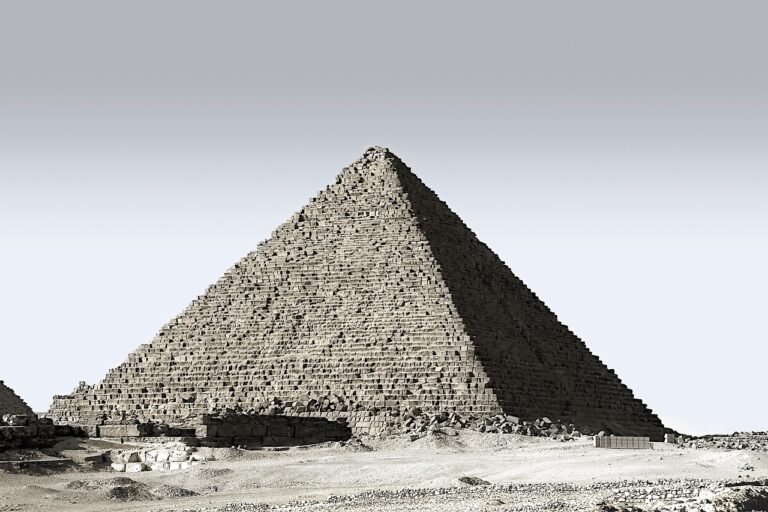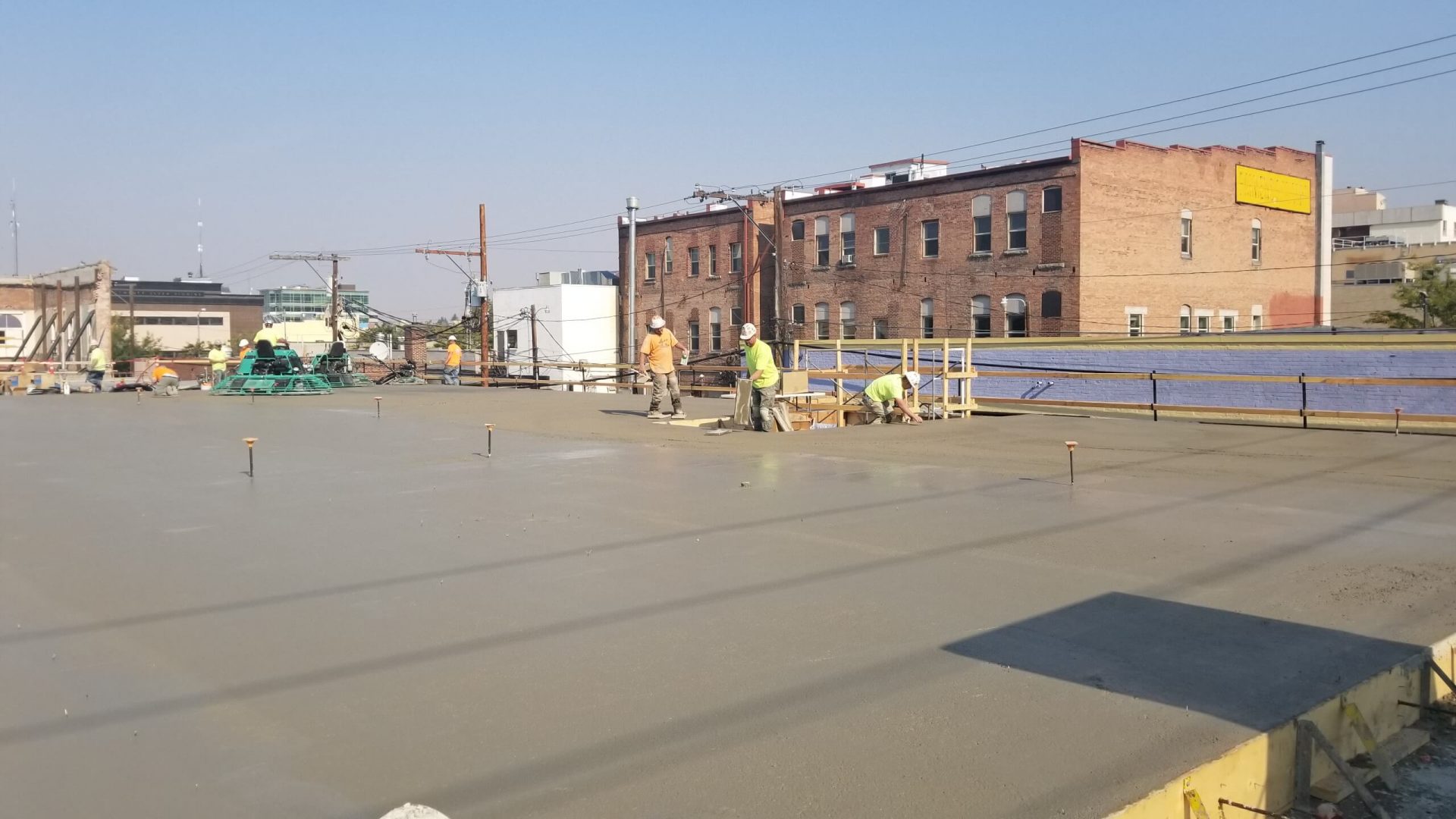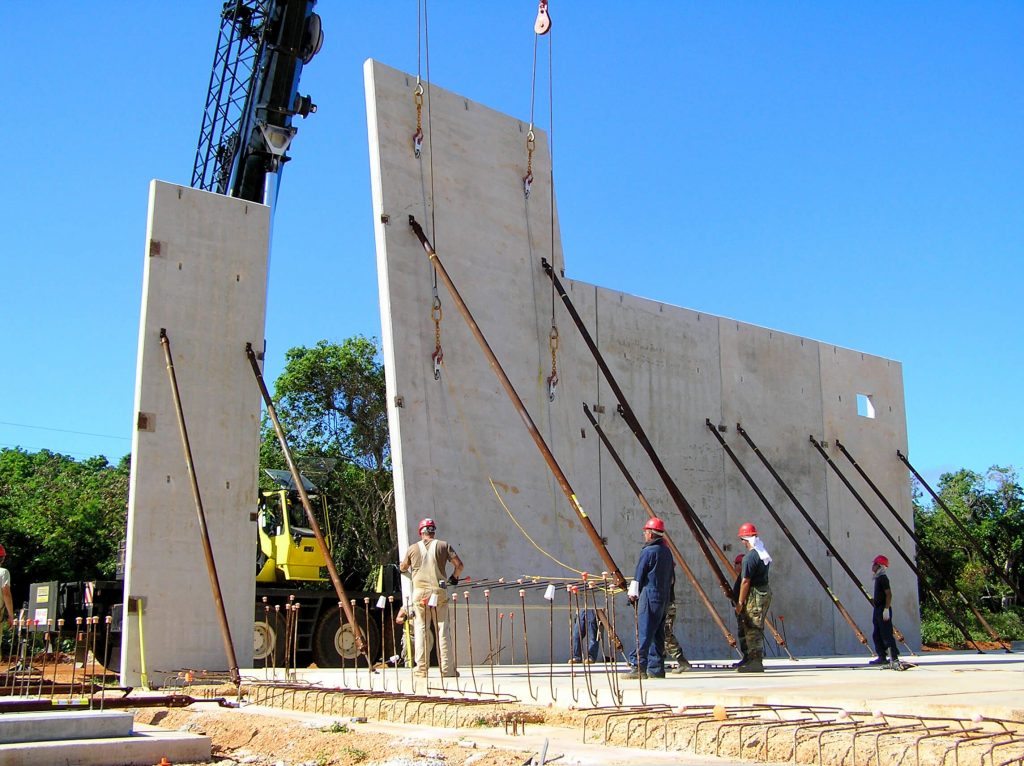There is no denying that concrete and the technology surrounding it have come a long way since its discovery and development. From the Great Pyramids at Giza to smart sensors for testing concrete temperature, maturity, etc., we have put together a list of notable events and discoveries in the history of concrete.
Explore 12 Futuristic Technology Trends Solving Concrete's Biggest Challenges.
History of Concrete: The Evolution
6500BC – UAE: The earliest recordings of concrete structures date back to 6500BC by the Nabataea traders in regions of Syria and Jordan. They created concrete floors, housing structures, and underground cisterns.
3000 BC – Egypt and China: Egyptians used mud mixed with straw to bind dried bricks. They also used gypsum mortars and mortars of lime in the pyramids. The Great Pyramids at Giza used about 500,000 tons of mortar. A form of cement was also used to build the Great Wall of China around this time.
600 BC – Rome: Although the Ancient Romans weren’t the first to create concrete, they were the first to utilize this material widespread. By 200 BC, the Romans successfully implemented the use of concrete in the majority of their construction. They used a mixture of volcanic ash, lime, and seawater to form the mix. They then packed the mix into wooden forms, and once hardened, stacked the blocks like brick. After more than 2,000 years, Roman concrete structures stand tall due to their ingredients colliding with Earth’s natural chemistry.
Technological Milestones
During the Middle Ages, the history of concrete crept backward. After the fall of the Roman Empire in 476 AD, the technique for making pozzolan cement was lost until the discovery of manuscripts describing it was found in 1414. This rekindled the interest in building with concrete.
It wasn’t until 1793 that the technology took a big leap forward when John Smeaton discovered a more modern method for producing hydraulic lime for cement. He used limestone containing clay that was fired until it turned into clinker, which was then ground into powder. He used this material in the historic rebuilding of the Eddystone Lighthouse in Cornwall, England.
In 1824 Joseph Aspdin invented Portland cement by burning finely ground chalk and clay until the carbon dioxide was removed. Aspdin named the cement after the high-quality building stones quarried in Portland, England.
In the 19th Century, concrete was used mainly for industrial buildings. The first widespread use of Portland cement in home construction was in England and France between 1850 and 1880 by Francois Coignet, who added steel rods to prevent exterior walls from spreading.
The history of concrete sure is amazing!
Do you want to read more about the basics of concrete? Check out our blogs for more educational reading!
**Editors Note: This post was originally published in July 2017 and was updated for accuracy and comprehensiveness on July 2022.









12 Responses
What an insightful post! It’s fascinating to see how concrete has evolved over the centuries and how each technological milestone has contributed to modern architecture. I never realized the significance of Roman concrete in shaping construction techniques. Looking forward to more posts on innovative materials in building!
Actually,the inventor of Portland cement was Louis Vicat in 1817,right ?
Really Interesting. Love it.
Hello, I’m wondering if an approximate total weight of concrete used by humans historically could be provided?
Thanks
Hi Spencer, thank you for your comment. Unfortunately, this topic is not in our expertise but rather a topic we researched for this blog. You may be able to find the answer to your question in the sources listed at the end of this article.
Hi there!
Would I be able to have the name of the author who wrote this article? I have used some information from it for a thesis and I want to make sure I appropriately reference it.
Kind Regards
Jeremy
Hi Jeremy, glad you liked the article. You can just put the author as Giatec Scientific Inc. Good luck with your thesis!
Thank you very much for the information provided
I’m very impressed
bookmarked!!, I love your web site!
We are a group of volunteers and opening a new scheme in our community.
Your site offered us with useful info to work on. You have performed an impressive activity and our entire community will
probably be grateful to you.
How about post-tensioned or pre-stressed concrete?
Hi Charles, thank you for your comment. This blog posting was created for educational purposes to give our readers a sense of the history of concrete. Post-tensioning and pre-stressed concrete are definitely a big part of concrete construction. While that information is not included in this article, please find a complete overview of tensioning in this blog.